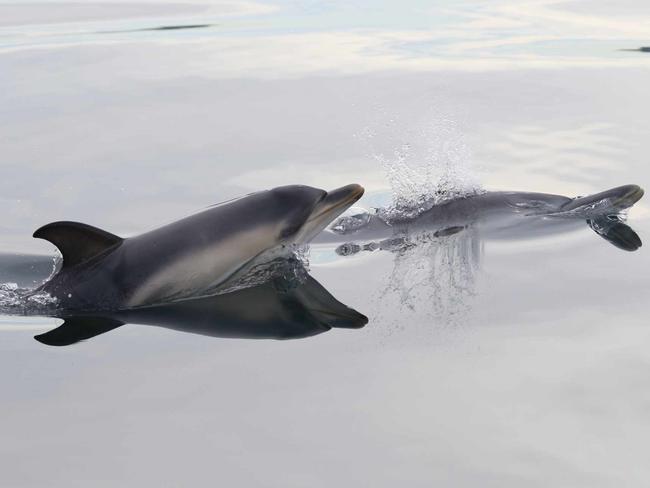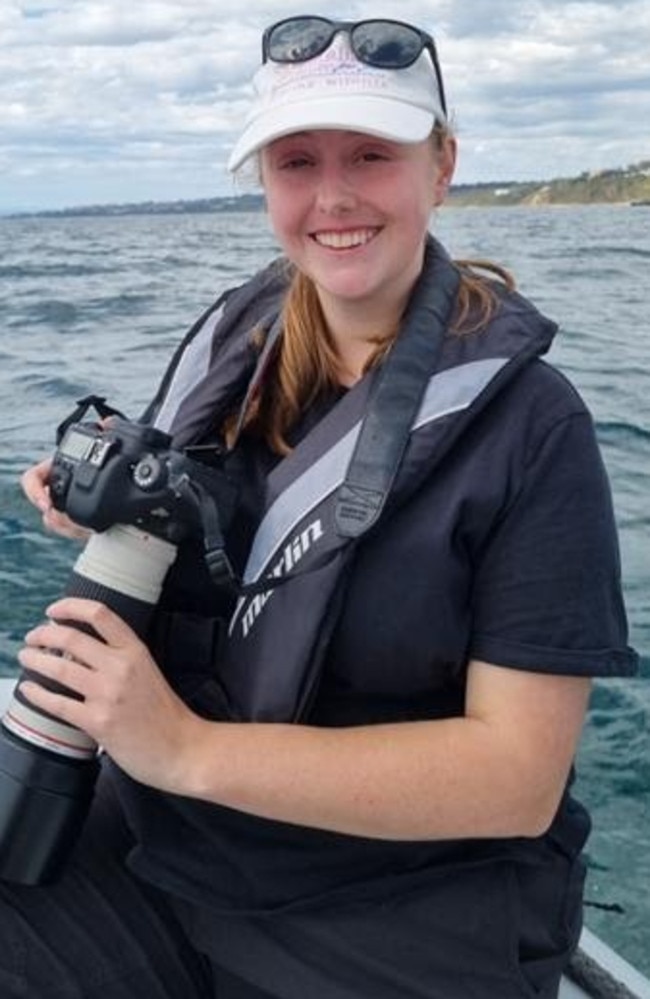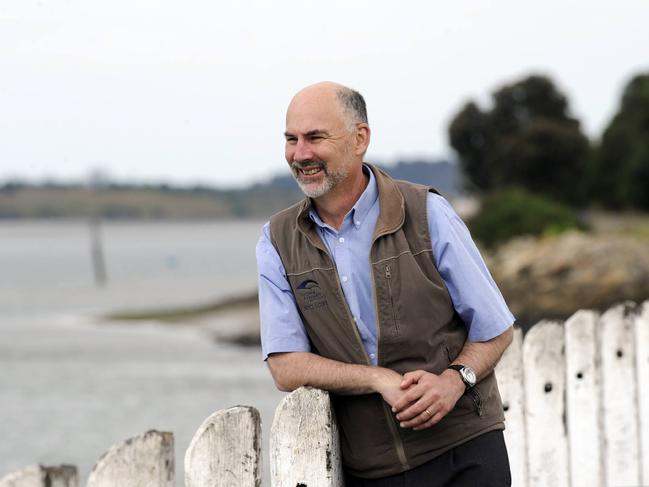Dolphin Research Institute celebrates significant birth of dolphin calf to young ‘mum’ Starfall
Dolphins have been breeding in waters off the Mornington Peninsula for almost 20 years but the latest birth has researchers particularly excited.
South East
Don't miss out on the headlines from South East . Followed categories will be added to My News.
Common dolphins have been frolicking in Port Phillip Bay for 20 years but the sighting of one particular calf in waters off Mornington has stunned experts.
The Dolphin Research Institute discovered the young dolphin swimming close to its mother Starfall in early December and after “triple checking” identified the calf as the first of a fourth generation in the bay.
Institute executive director Jeff Weir said the “significant discovery” was “astonishing”.
“While other common dolphin populations are struggling, we now have four generations in the Bay,” Mr Weir said.
“It’s a wonderfully positive story for the bay as a whole ecosystem.
“Starfall is only five and most dolphins don’t start producing offspring until they are at least seven.

Her calf, believed to have been born in late November, was first spotted by researcher Ella Hutchison as the team checked on a pod of 13 dolphins.
“Our concern is always for the dolphins,” Mr Weir said.
“So before approaching them, as we are allowed under our research permit, we watch for behavioural cues that are signs of stress, and sometimes we don’t go closer.”
After determining it was appropriate to get closer to the dolphins, Ms Hutchison prepared for the split-second chance to capture the perfect fin-ID image.
The photos are used to identify and track the dolphins.
Ms Hutchison said she “had a hunch” that she was photographing something special, but it wasn’t until she uploaded the images that she realised the significance of the tiny dolphin.
“At first, I couldn’t believe what I saw and needed to confirm it with my colleagues,” she said.

Her hunch was supported by her photos and observations of Starfall feeding her calf by other team members.
In another heartwarming twist Starfall’s great grandmother Esther has also delivered another calf, her fifth.
“Esther is a remarkable mother who we think had her first calf in 2007,” Mr Weir said.
“Reproductive success is one of the most critical measures of the health of animal communities.
“Unfortunately, for many dolphin communities, even in Australia, many calves don’t survive to adulthood.”

Long term monitoring by the Institute of the dolphins in the bay was essential to detect patterns, Mr Weir said.
He said the data gathered by the Institute was used to help ensure environment managers understood and considered the health of the dolphin community when making decisions about the bay.
The Institute will continue to monitor Starfall and her baby and are also looking for a name for the calf.
Mr Weir said anyone who joined the Institute’s Adopt-A-Dolphin program over the summer would be invited to suggest a name for the very special calf.
He said while he understood the calf’s arrival would be of great interest to many, he urged people to stay away from the pod.
“If you see dolphins, just slow down or stop if it’s safe; they may even come to you,” Mr Weir said.
“Enjoy the experience and let them swim off without following.”
The basic rules are not to approach dolphins closer than 30m (swimmers), 100m (boat), and 300m (PWC).
